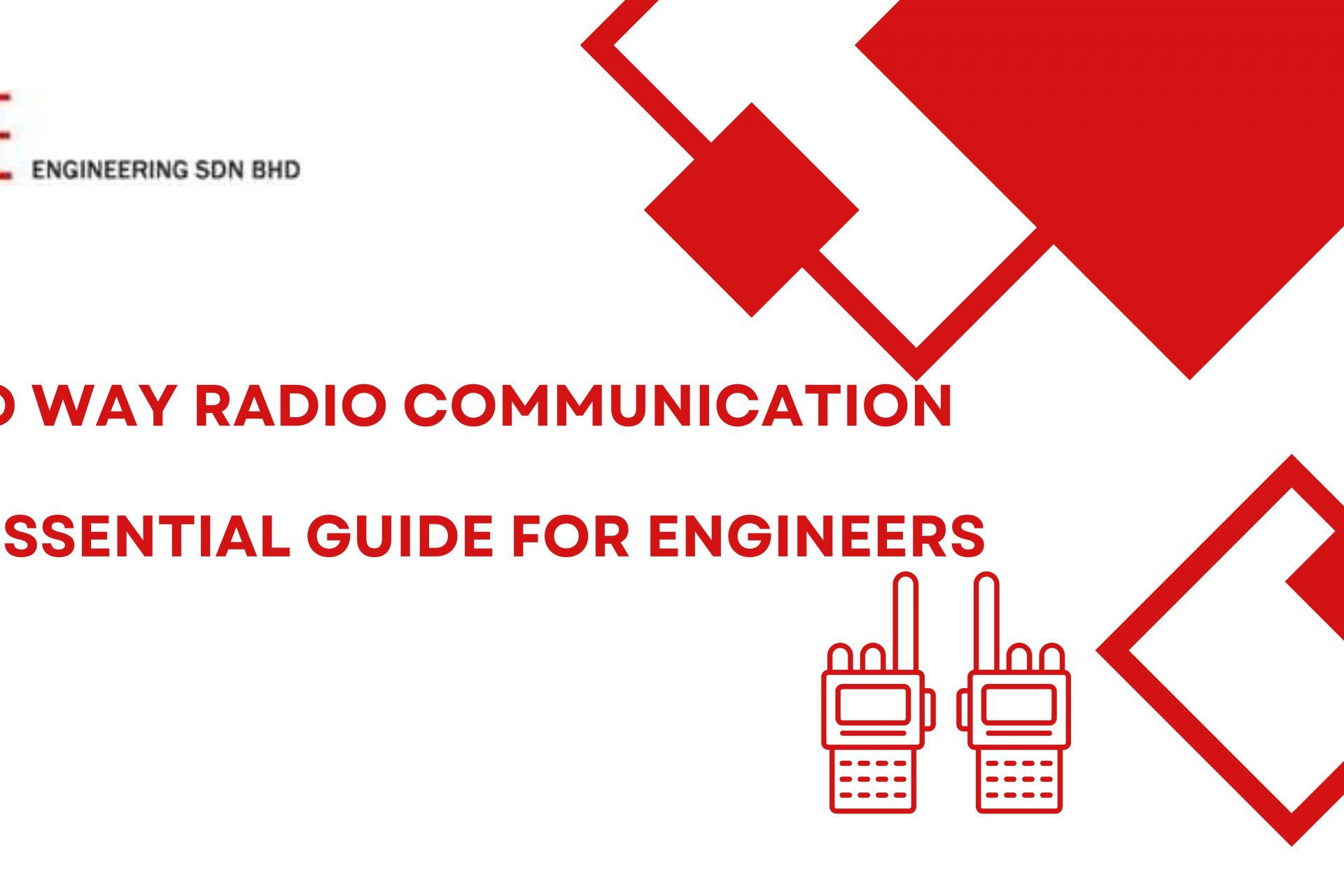Effective communication is crucial for any engineering project. In many cases, traditional communication methods fall short, especially in remote locations or areas with limited network coverage. This is where two-way radio communication comes into play. Two-way radios, commonly known as walkie-talkies, provide reliable, real-time communication, making them an indispensable tool for engineers. In this comprehensive guide, we will explore the benefits, features, and applications of two-way radio communication for engineers, along with the importance of coaxial cable in establishing a robust communication infrastructure.
Chapter 1: Understanding Two-Way Radio Communication
1.1 What are Two-Way Radios?
Two-way radios are handheld devices that allow for instant, bidirectional communication. They consist of a transmitter and a receiver, enabling users to send and receive messages without the need for a dedicated infrastructure like cell towers or Wi-Fi networks.
1.2 Benefits of Two-Way Radios for Engineers
-
- Reliable Communication: Two-way radios operate on dedicated frequencies, ensuring reliable communication even in remote or challenging environments.
- Real-Time Updates: Instantaneous communication enables engineers to relay critical information, receive feedback, and make informed decisions on the spot.
- Enhanced Safety: Two-way radios facilitate quick response times during emergencies, improving overall safety on worksites.
- Cost-Effective: Unlike mobile phones, two-way radios have no monthly fees or data charges, making them a cost-effective communication solution for engineering teams.
Chapter 2: Key Features of Two-Way Radios
2.1 Range
The range of a two-way radio refers to the maximum distance over which it can transmit and receive signals. Engineers should consider the range requirements based on their project’s scope and location.
2.2 Battery Life
Battery life is an essential consideration, especially for long-duration projects. Look for radios with extended battery life or options for rechargeable batteries to ensure uninterrupted communication.
2.3 Durability
Engineers often work in challenging environments, including construction sites or outdoor locations. Therefore, choosing rugged and durable two-way radios that can withstand harsh conditions is crucial.
2.4 Noise-Canceling and Voice Activation
Look for radios equipped with noise-canceling features to minimize background noise and ensure clear communication. Voice activation capabilities allow for hands-free communication, further enhancing convenience and safety.
Chapter 3: Applications of Two-Way Radios in Engineering
3.1 Construction Sites
Two-way radios are widely used in the construction industry, facilitating communication between engineers, project managers, and on-site workers. They help coordinate tasks, manage safety protocols, and address issues promptly.
3.2 Oil and Gas Industry
In the oil and gas sector, where workers are often spread across large and remote areas, two-way radios are essential for maintaining constant contact. They aid in monitoring operations, coordinating logistics, and ensuring worker safety.
3.3 Event Management
For engineers involved in event management, walkie-talkies are invaluable tools for seamless coordination. From setting up stages and equipment to managing security and emergencies, reliable communication is vital for a successful event.
Chapter 4: Importance of Coaxial Cable in Two-Way Radio Communication
4.1 What is Coaxial Cable?
Coaxial cable is a type of electrical cable consisting of an inner conductor, insulation, a metallic shield, and an outer protective cover. It is widely used to transmit high-frequency signals with minimal interference or loss.
4.2 Role in Signal Transmission
Coaxial cable plays a critical role in establishing a robust communication infrastructure for two-way radios. It ensures efficient signal transmission, minimizing signal degradation and interference.
4.3 Factors to Consider When Choosing Coaxial Cable
When selecting coaxial cable for two-way radio communication, engineers should consider factors such as frequency range, impedance, attenuation, and environmental conditions. Choosing the appropriate coaxial cable ensures optimal signal quality and range.
Conclusion
Two-way radio communication is an essential tool for engineers, providing reliable, real-time communication in various industries and challenging environments. Understanding the key features and applications of two-way radios empowers engineers to select the most suitable devices for their projects. Additionally, the importance of coaxial cable in establishing a robust communication infrastructure should not be overlooked. By leveraging the benefits of two-way radio communication and implementing the right coaxial cable, engineering teams can enhance efficiency, safety, and productivity on their worksites.
Remember, for high-quality two-way radios and coaxial cable, Sole Engineering is your trusted partner. Explore our range of products and experience seamless communication for your engineering projects.







